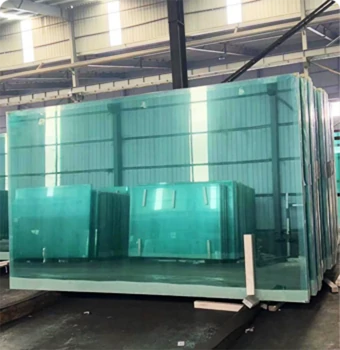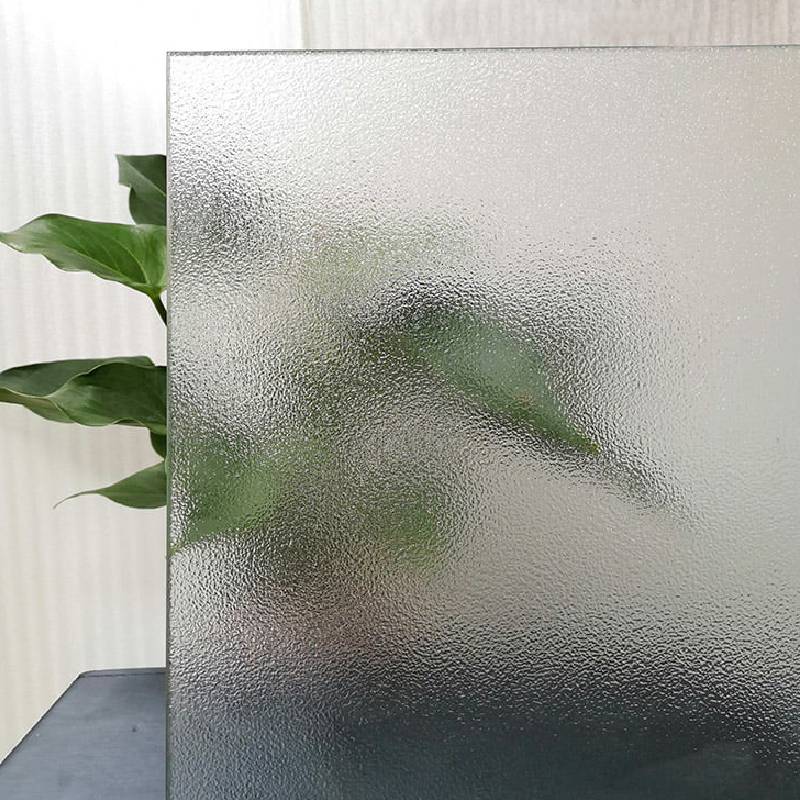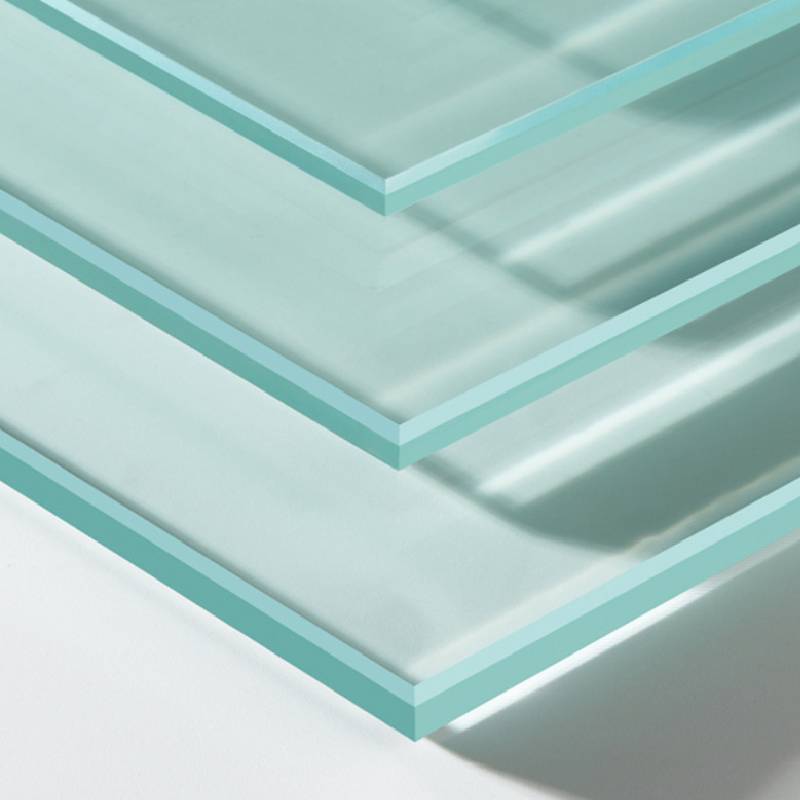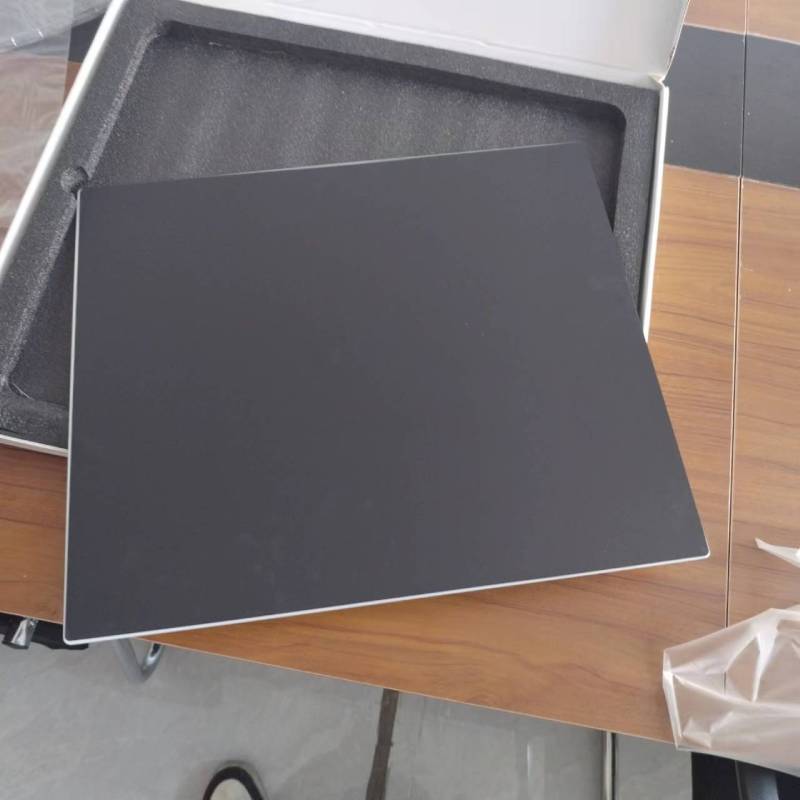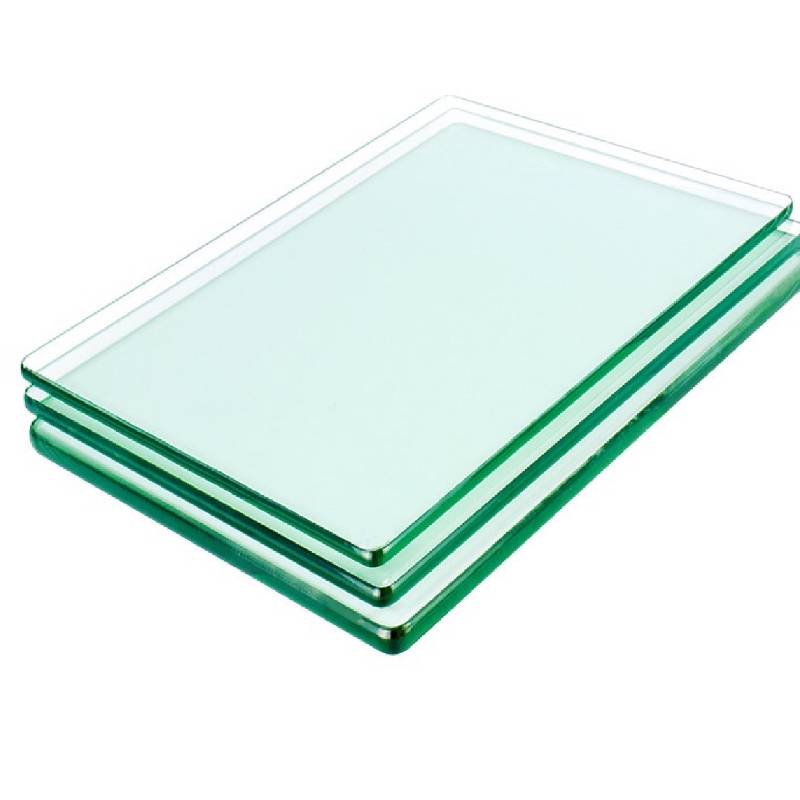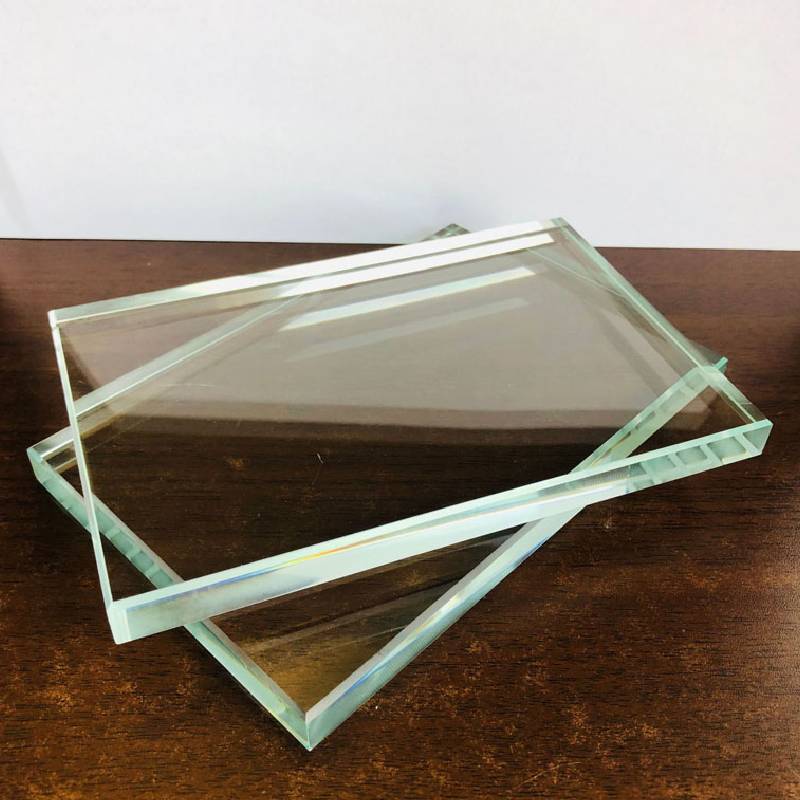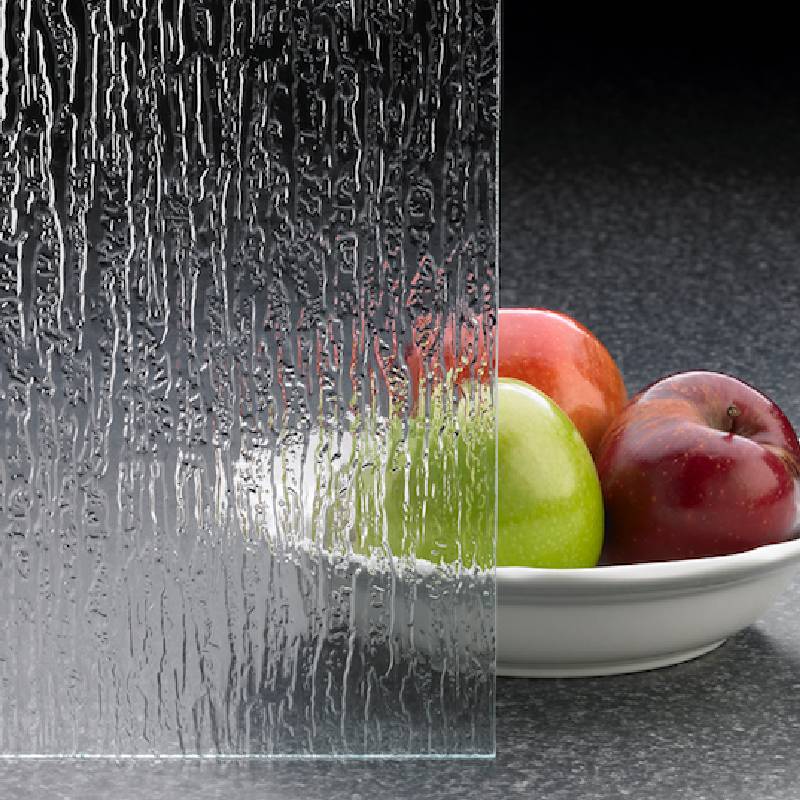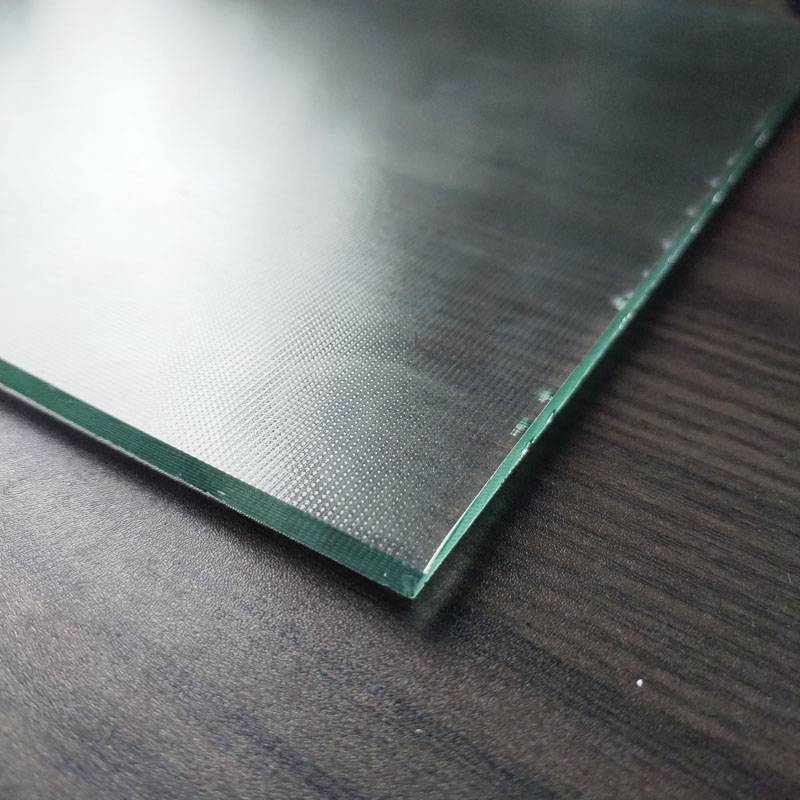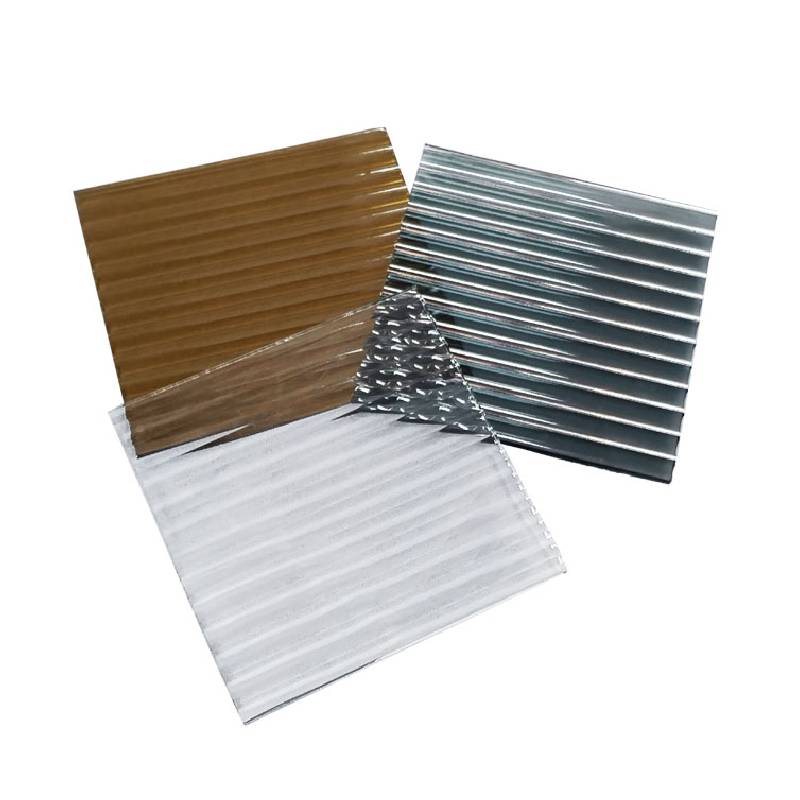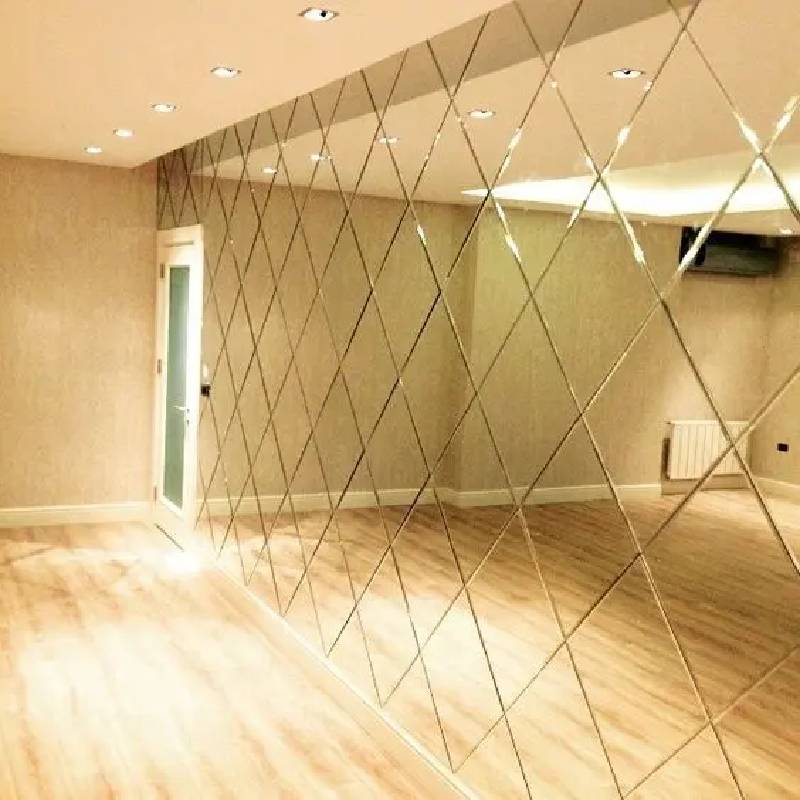Float glass means that the raw materials are melted at high temperature in the furnace. The molten glass continuously flows from the furnace and floats on the surface of the relatively dense tin liquid. Under the action of gravity and surface tension, the glass liquid spreads on the tin liquid surface. It is opened, flattened, and the upper and lower surfaces are formed to be smooth, hardened, and cooled before being led to the transition roller table. The rollers on the roller table rotate, pulling the glass ribbon out of the tin bath and into the annealing kiln. After annealing and cutting, flat glass products are obtained. The biggest feature of float glass is that its surface is hard, smooth, and flat. Especially when viewed from the side, the color is different from ordinary glass. It is white and the object is not distorted after reflection. In addition, due to the relatively good thickness uniformity, the transparency of its products is also relatively strong. It is precisely because of this transparency that it has a wider field of view. The broad field of view allows float glass to be used in many fields.
The production process of float glass is completed in a tin bath where protective gas (N2 and H2) is introduced. Molten glass continuously flows from the tank kiln and floats on the surface of the relatively dense tin liquid. Under the action of gravity and surface tension, the molten glass spreads and flattens on the tin liquid surface, forming an upper and lower surface that is smooth, hardened, and cooled. Then he was led to the transition roller table. The rollers on the roller table rotate, pulling the glass ribbon out of the tin bath and into the annealing kiln. After annealing and cutting, flat glass products are obtained. Compared with other forming methods, the advantages of float method are: it is suitable for high-efficiency manufacturing of high-quality flat glass, such as no corrugation, uniform thickness, smooth upper and lower surfaces, and parallel to each other; the scale of the production line is not limited by the forming method, and the energy per unit product Low consumption; high utilization rate of finished products; easy to scientifically manage and realize full-line mechanization and automation, high labor productivity; continuous operation cycle can last for several years, which is conducive to stable production; can provide suitable conditions for online production of some new varieties, such as Electric float reflective glass, spray film glass during annealing, cold end surface treatment, etc.
Float glass is widely used and is divided into tinted glass, float silver mirror, float white glass, etc. Among them, ultra-white float glass has a wide range of uses and broad market prospects. It is mainly used in the fields of high-end buildings, high-end glass processing and solar photovoltaic curtain walls, as well as high-end glass furniture, decorative glass, imitation crystal products, lighting glass, precision electronics industries, Special buildings, etc. Float glass has relatively good thickness uniformity and relatively strong transparency. Therefore, after tin surface treatment, it is relatively smooth. Under the action of smoothing, flame and polishing, it forms a surface that is relatively neat and flat. Glass with better strength and stronger optical properties. This kind of float glass has the characteristics of good transparency, brightness, purity, and bright indoor light. It is also the best choice for building doors, windows, and natural lighting materials. It is also one of the most widely used building materials. one.
The history of float glass can be traced back to the late 1950s. The British Pilkington Glass Company announced to the world that it had successfully developed the float forming process for flat glass. This was a revolution in the original grooved top forming process. However, the Western technology blockade at that time made China's float glass development and production have to take the path of self-reliance and independent innovation. In May 1971, the former Ministry of Building Materials Industry decided to conduct float process industrial trials in Luobo. Glass experts from all over the country gathered in Luobo, and more than a thousand employees of Luobo participated in the war. On September 23, 1971, under the guidance of department leaders and relevant experts, and with the full cooperation of fraternal units, the cadres and workers of Luoyang University worked together for more than three months and finally successfully built the first float. The glass production line produced my country's first float glass. From 1971 to 1981, CLFG implemented large-scale technical transformation on this line three times. The melting capacity of the production line reached 225 tons, the plate width exceeded 2 meters, and the overall yield reached 76.96%. At the end of 1978, In early 1979, thinner 4 mm glass was stably produced. The technology and equipment of "Luoyang Float Glass Process" were also improved day by day, and the technical level was continuously improved.
I vantaggi del vetro float si riflettono principalmente nei seguenti aspetti: primo, ha una buona planarità e nessuna increspatura dell'acqua; in secondo luogo, la sabbia di quarzo minerale selezionata ha buone materie prime; in terzo luogo, il vetro prodotto è puro e ha una buona trasparenza; infine la struttura Compatta, pesante, liscia al tatto, più pesante di una lastra piana per metro quadrato di pari spessore, facile da tagliare e non facile da rompere. Questi vantaggi rendono il vetro float ampiamente utilizzato nell'edilizia, nelle automobili, nella decorazione, nei mobili, nella tecnologia dell'informazione e in altri settori.
- Spessore del vetro float
Spessore regolare 3 mm, 4 mm, 5,5 mm, 6 mm, 8 mm, 10 mm, 12 mm
Ultrasottile 1,2 mm, 1,3 mm, 1,5 mm, 1,8 mm, 2 mm, 2,3 mm, 2,5 mm
Extra spesso 15 mm, 19 mm
Dimensioni 1220*1830 mm, 915*2440 mm, 915*1220 mm, 1524*3300 mm, 2140*3300 mm, 2140*3660 mm, 2250*3300 mm, 2440*3660 mm
 africano
africano  albanese
albanese  Amarico
Amarico  Arabo
Arabo  armeno
armeno  Azero
Azero  Basco
Basco  bielorusso
bielorusso  bengalese
bengalese  Bosniaco
Bosniaco  bulgaro
bulgaro  catalano
catalano  Cebuano
Cebuano  Corso
Corso  croato
croato  ceco
ceco  danese
danese  Olandese
Olandese  Inglese
Inglese  esperanto
esperanto  Estone
Estone  finlandese
finlandese  francese
francese  Frisone
Frisone  galiziano
galiziano  georgiano
georgiano  Tedesco
Tedesco  greco
greco  Gujarati
Gujarati  Creolo haitiano
Creolo haitiano  haussa
haussa  hawaiano
hawaiano  ebraico
ebraico  No
No  Miao
Miao  ungherese
ungherese  islandese
islandese  igbo
igbo  indonesiano
indonesiano  irlandesi
irlandesi  Italiano
Italiano  giapponese
giapponese  giavanese
giavanese  Kannada
Kannada  kazako
kazako  Khmer
Khmer  Ruandese
Ruandese  coreano
coreano  curdo
curdo  Kirghizistan
Kirghizistan  TBC
TBC  latino
latino  lettone
lettone  lituano
lituano  Lussemburghese
Lussemburghese  macedone
macedone  Malgashi
Malgashi  malese
malese  Malayalam
Malayalam  maltese
maltese  Maori
Maori  Marathi
Marathi  mongolo
mongolo  Myanmar
Myanmar  nepalese
nepalese  norvegese
norvegese  norvegese
norvegese  occitano
occitano  Pashtu
Pashtu  persiano
persiano  Polacco
Polacco  portoghese
portoghese  Punjabi
Punjabi  rumeno
rumeno  russo
russo  Samoano
Samoano  Gaelico Scozzese
Gaelico Scozzese  serbo
serbo  Inglese
Inglese  Shona
Shona  Sindhi
Sindhi  Singalese
Singalese  slovacco
slovacco  sloveno
sloveno  Somalo
Somalo  spagnolo
spagnolo  Sundanese
Sundanese  Swahili
Swahili  svedese
svedese  Tagalog
Tagalog  Tagico
Tagico  Tamil
Tamil  Tartaro
Tartaro  Telugu
Telugu  tailandese
tailandese  Turco
Turco  turkmeno
turkmeno  ucraino
ucraino  Urdu
Urdu  Uiguro
Uiguro  Uzbeco
Uzbeco  vietnamita
vietnamita  gallese
gallese  Aiuto
Aiuto  yiddish
yiddish  Yoruba
Yoruba  Zulù
Zulù 

